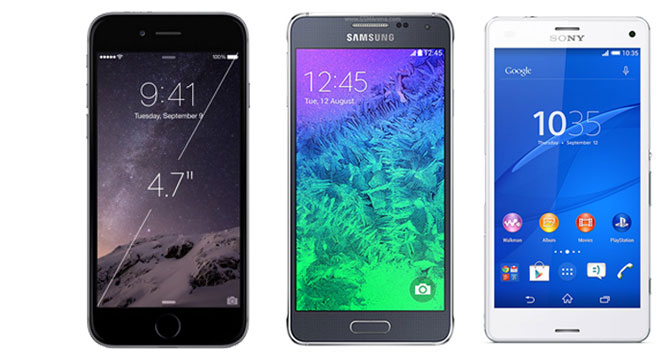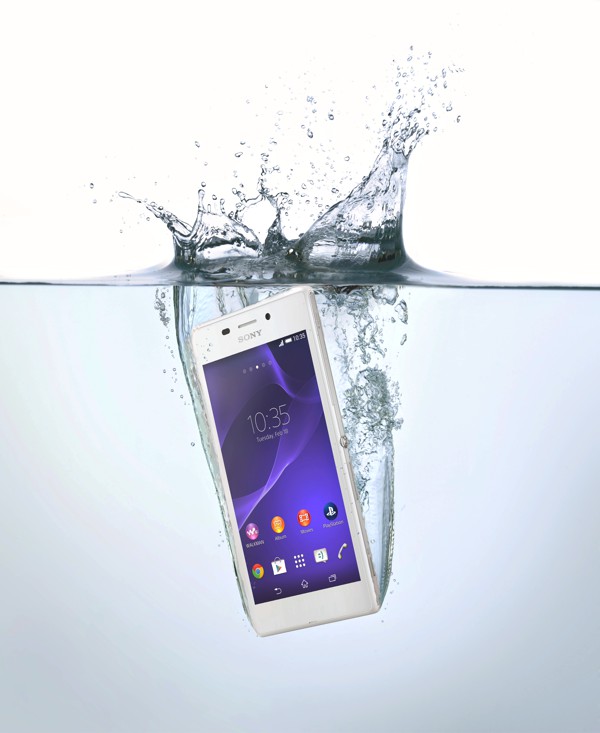
In its upcoming earnings report, many analysts expect Samsung to report a significant dip in its quarterly profits. For Q3 2014, the electronic giant will likely report a profit of 4.1 trillion won ($3.8 billion) from the $10.6 trillion won operating profit that the company booked in Q3 2013. That means in just one quarter, Samsung profits will have dipped nearly 60%! With continued pressure from Apple in the high-end market and increasing competition from Chinese manufacturers like Xiaomi and Lenovo, Samsung is beginning to find itself unable to compete. It’s also worth noting that during Q3 2014, Apple held a 0% market share for smartphones with a screen size larger than 4-inches. Since that time, Apple has introduced the iPhone 6 and iPhone 6+ which command 4.7- and 5.5-inch displays, taking the only advantage Samsung may have had in the high-end market.
Translation? Next quarter will likely be even worse for Samsung. If this all sounds too familiar, we need not look further than Sony to see a company who is plagued by the same issues. Sony just recently revised their FY 2014 estimate and announced a larger than expected $2.1 billion loss. Samsung’s pain, however, might be Sony’s gain if Sony can learn some key lessons from this massive blow to Samsung.
One of the reasons Samsung is facing such a financial blow is a lack of identity. Till now, the only thing Samsung has been known for is cocky commercials mocking those who purchase Apple products and creating Apple clones wrapped in plastic. There is no denying the success Samsung has enjoyed but as we can see from the most recent earnings report, much of it is not based on a company with a true identity. Instead, some had migrated to their products due to the fact that Apple did not offer the screen size they desired. Others enjoyed the company’s lower priced products. The last two are no longer valid with Apple now offering larger sized iPhone models while from the low end, Chinese companies have been able to steadily take market share away from the company.

Advertising is another area where Samsung has been successful, but they’ve been too busy attempting to poke fun at users of Apple products which automatically ensures they won’t be coming to your product line in the future (potentially across other areas where Samsung operates as well, like televisions and appliances). These short term gains turn into a hollow and bankrupt long term strategy for Samsung in which consumers are not sure what the company stands for and their competitive edge of offering large displays or cheap phones is easily taken away with one product cycle. In addition to spending an astronomical amount of money on advertising, something that Samsung now plans to scale down on, Samsung is also notorious for putting on incentives for retailers to help push their products over competitors, resulting in their products being shoved down consumer throats. This once again will result in short term gains, but if an employee made that recommendation based on an incentive for them and not on the consumers’ needs, you can bet that their next device will likely not be from that brand.
In short, the success Samsung has enjoyed has not been based on an actual acceptance of the company by the wider consumer and has instead been based on a short-sighted marketing push where the products they offered filled a temporary niche. And therein lies the lessons that Sony must learn from this rejection.
Sony has been troubled by the woes of Samsung. They’ve been steadily pushed out of the low-end market by Chinese manufacturers and are unable to compete with Apple on the high-end market. Luckily for them, their latter problem is solvable. Despite pressure from time to time from Wall Street, Apple has been smart about entering the low-end market. It was true for the Mac and it’s been true for the iPhone and iPad. Apple is well aware that they provide a luxury good and they only do their best when they can create the product they want. The minute you create a product based on a specific price point, a lot of sacrifice comes to play. Worse off, there is always a company who can likely create a version that’s slightly cheaper and when you get to budget products, generally good enough is good enough. This means that the consumers who are looking for a product within that price range are less worried about specs than they are price, resulting in a race to the bottom with no profits. Sony has hopefully realized this and will wisely stay out of the low-end market, if not lessen their reliance on it with fewer models.

This leaves the lucrative high-end market which is dominated by Apple. For all the reasons that Samsung has failed, Sony can succeed. There is a clear rejection of the plastic fleet that Samsung is offering as consumers flock to iPhone 6 and iPhone 6+. However, that doesn’t mean there is a rejection of Android and it doesn’t mean that those with Android in mind don’t want a luxury device. In order for Sony to capitalize on this market, they must create an identity that’s unique to them. Create compelling products (and we can argue that they already do with the Xperia Z line) that’s unique and not a clone of what Apple offers.
With such a product, Sony must then create a marketing vision that’s not only about their products but about their company. Any time a marketing strategy is based on pointing out what makes your competitor’s product inferior to yours, I feel as if you’ve already lost. Instead, the ad (much like Apple’s, which never even mention its competitors) should be able to convey what makes the product special and should give you a reason to purchase it. In the same way, ads about your company need to convey what your company stands for it and give consumers a reason to care.
Straight to the point… time to switch? #XperiaZ3 http://t.co/qOlqbE4duh pic.twitter.com/dMwcYFdUEB
— Sony Xperia (@sonyxperia) September 25, 2014
Sony has equally made the mistake of targeting Apple in their scarce marketing that usually relies on videos, or social media interactions. They create videos showing how to move from iOS to Apple while tweeting out what made their products better than the iPhone post iPhone 6 announcement. Sony even was suckered into the ‘BendGate’ hoopla about the iPhone 6+ which eventually proved to be mostly a hoax.
None of this to me shows a company who is confident about their products. Attempting to lure consumers from iOS to Android is also a fruitless effort and waste of resources for Sony who needs to be extremely financially savvy on how they promote their products. Till now, Sony marketing has either been bizarre or extremely scarce. With such a big blow to Samsung and a scaled down marketing strategy from them in the near future, Sony can take this as an opportunity to reintroduce to the world and especially the US who they are and what makes their products unique.
Sony will only be successful if they stop chasing and obsessing over Apple like Samsung continues to do. Instead they must look internally and give consumers a reason to care about their brand and products that can stand on its own without the need of mentioning competitors or pulling them down in order to shine above them.
As I argued in my editorial on why Sony must exit the wearable market, Sony offers a compelling product portfolio that’s only hampered by a lack of leadership. With the right leadership and a compelling marketing strategy, Sony is in the perfect position to replace Samsung and offer a compelling alternative to Apple.
Discuss:
Do you think Sony can be an alternative to Apple without following in the footsteps of Samsung?

You must be logged in to post a comment.